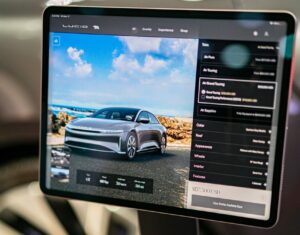
Home / EV Charging News / Electric Cars and Green Building Standards: A Fusion of Sustainable Transportation and Architecture
In the contemporary landscape of environmental awareness, the convergence of electric cars and green building standards represents a dynamic interplay between sustainable mobility and eco-conscious architecture. This article delves into the intrinsic relationship unfolding between electric vehicle (EV) charging infrastructure and the evolving realm of green building standards, shedding light on the significant role electric cars play in shaping sustainable architectural practices.
Electric vehicles, beyond their role in reducing carbon emissions, are becoming pivotal elements in reshaping urban environments. Sustainable architecture, with its emphasis on energy efficiency and environmental responsibility, is embracing the integration of electric cars as part of its evolving narrative.
Electric mobility is not merely a solution to combat air pollution; it serves as a transformative force, aligning seamlessly with principles of energy conservation, renewable energy adoption, and an overarching commitment to reducing the ecological footprint. The integration of electric cars into the fabric of sustainable architecture represents a paradigm shift towards holistic sustainability.
The increasing prevalence of electric vehicles necessitates a reevaluation of green building standards to accommodate the evolving needs of environmentally conscious individuals. This recognition underscores the symbiotic relationship between sustainable transportation and green architecture, leading to an integration of EV charging infrastructure within established green building standards.
Standards such as Leadership in Energy and Environmental Design (LEED) are evolving to encompass provisions for EV charging. This acknowledgment signifies the importance of supporting the growing community of electric vehicle owners within the framework of sustainable architecture.
The incorporation of EV charging infrastructure into green building standards not only reflects a response to the changing transportation landscape but also positions sustainable architecture as a facilitator of the electric mobility revolution. As green building standards continue to adapt, they contribute to the creation of urban environments that seamlessly blend sustainable transportation with eco-friendly architectural practices.
Looking ahead, the integration of electric vehicles into green building standards promises a future where electric mobility is a cornerstone of sustainable urban design. This collaboration extends beyond the mere inclusion of charging infrastructure; it envisions a holistic approach where electric cars are seamlessly woven into the fabric of smart cities and sustainable communities.
As the demand for electric vehicles grows, architects and urban planners are presented with a unique opportunity to design spaces that cater to the evolving needs of electric vehicle owners. This encompasses not only the strategic placement of charging stations but also the incorporation of smart technologies that optimize energy consumption, further reducing the environmental impact of both buildings and transportation.
While the integration of electric cars into green building standards represents a progressive step, challenges persist. The need for standardized charging protocols, the optimization of charging station locations, and the scalability of green building standards across diverse urban landscapes are areas that demand attention.
Innovations in sustainable architecture are addressing these challenges. Concepts such as dynamic charging infrastructure embedded in roads and buildings, as well as the exploration of advanced energy storage solutions, showcase the potential for overcoming current limitations. These innovations not only enhance the user experience for electric vehicle owners but also contribute to the overall resilience and sustainability of urban infrastructure.
For the harmonious integration of electric cars into green building standards, policymakers play a crucial role. Incentives for developers to incorporate EV-friendly features, zoning regulations that prioritize sustainable transportation, and tax benefits for green building initiatives are essential to foster a supportive environment.
Moreover, international collaboration on building standards and sustainable urban development can accelerate the global transition to electric mobility. Shared best practices and a collective commitment to environmentally conscious urban planning can propel the fusion of electric cars and sustainable architecture on a global scale.
The relationship between electric cars and green building standards extends beyond infrastructure; it empowers communities to embrace sustainable transportation. As electric vehicles become more accessible, communities can reduce their carbon footprint, alleviate air pollution, and contribute to the creation of healthier and more livable urban spaces.
In conclusion, the integration of electric cars into green building standards represents a transformative journey towards sustainable urban design. Beyond fulfilling the charging needs of electric vehicles, this integration envisions a future where electric mobility is woven into the very fabric of our cities, influencing how we plan, design, and experience urban living. As electric cars continue to shape the landscape of sustainable architecture, the potential for creating truly eco-friendly and technologically advanced urban environments becomes an exciting and achievable reality.
$4,150.00 Original price was: $4,150.00.$3,990.00Current price is: $3,990.00.
$10,690.00 – $11,390.00

Your Power Management Partner for Over 25 Years Future Generations Depend on Our Decisions Today ™
2024 © All rights reserved by CyberSwitching